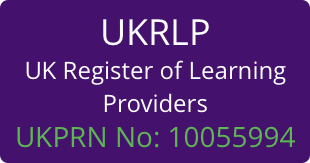
Addressing skills gaps in an organisation can be challenging, but it is critically important. When employees are given the opportunity to learn and grow and reach their full potential, they are more likely to be engaged, productive, satisfied with their work and loyal to their employer. All of which can lead to a number of benefits for an organisation, including increased profits, improved customer service, and a stronger competitive advantage.
There is a wealth of evidence on the benefits of learning and development with 92% of employees believing that training has a positive impact on their engagement at work1. However, despite this the CIPD Learning at Work survey2, found that only just over half of learning and development professionals believe that managers encourage staff to undertake learning and development. They also found that those learning and development professionals who used organisational data, consulted about needs and embraced technology, were able to create positive change for the organisation, despite challenges.

The use of technology in learning and development (L&D) has increased significantly over the last 3 years, partly driven by the Covid Pandemic. L&D teams have become much more innovative in their use of learning technologies with 68% saying they are successful in its use. Artificial intelligence (AI) is the latest tool that everyone is talking about and it’s an up-and-coming tool to be used by L&D professionals, with 5% currently using AI tools to support learning2.
AI has actually been used to deliver and support learning for a number of years. In 2019, IBM Watson began offering personalised learning modules for employees of Walmart. The modules were based on each employee’s individual skills and performance data, and were designed to help employees learn new skills and improve their existing ones. More recently Google launched an AI-powered chatbot called Bard that can answer learners’ questions about Google products and services. In 2021, Microsoft launched a new AI-powered platform called Viva Learning. Viva Learning provides a personalised learning experience that combines on-demand courses, live training, and social learning.
AI is being used to deliver learning in a number of ways, including:
- Personalising learning by tailoring content and assessments to each individual learner’s needs and preferences. This can help learners to learn more effectively and efficiently.
- Intelligent virtual instructors can be used to provide instruction and feedback to learners. They can also analyse a learner’s progress and adapt the instruction to meet their needs. This can be especially helpful for learners who need additional support or who are unable to attend traditional training sessions.
- Gamification used to gamify training, making it more engaging and interactive for learners. This can help learners to stay motivated and to retain information more effectively.
- Language translation to translate training materials into different languages so they can be globally accessible.
- AI chatbots can be used to answer learners’ questions and provide support. This can free up human instructors to focus on more complex tasks.
- AI data analytics can be used to analyse data on learner performance and behaviour. This data can be used to improve the design and delivery of training, as well as to identify learners who may need additional support.

All L&D professionals know the importance of identifying employee knowledge and skills gaps. Gaps that can mean that employee’s aren’t able to effectively meet the objectives of their roles, and the wider business objectives now or in the future. The use of artificial intelligence (AI) in this area of L&D might be new to you, but it is already being used to identify skills gaps in a number of ways, including:
- Automating data collection and analysis to automate the process of collecting and analysing data on employee skills, knowledge, and performance. This data can then be used to identify areas where training is needed.
- Predicting future training needs to predict future training needs by analysing data on trends in technology, industry, and the workforce. This information can be used to develop training programs that will prepare employees for the future.
- Generating customised training recommendations to generate customised training recommendations for individual employees or groups of employees. These recommendations can be based on the employee’s skills, knowledge, performance data, and future training needs.
- Personalising training content to each individual learner’s needs and preferences. This can help learners to learn more effectively and efficiently.
- Monitoring training progress by tracking learner engagement, performance, and completion rates. This information can be used to identify learners who may need additional support or who may be at risk of failing the training.
One of the challenges faced by learning and development teams is getting employer buy-in to employee training. Presenting a compelling case for developing the skills and knowledge of employees is the best approach and although there are many advantages, increased return on investment (ROI) is one of the most compelling. Where artificial intelligence is being used effectively it is already increasing ROI. Here are some examples of how AI is being used:
- A large retail company used AI to analyse data on employee performance and identify areas where training was needed. The company then developed a training program that was tailored to the specific needs of the employees. As a result of the training program, the company saw a significant improvement in employee performance.
- A healthcare organisation used AI to predict future training needs for its nurses. The organisation used data on trends in healthcare, patient care, and the workforce to develop a training plan that would prepare nurses for the future. As a result of the training plan, the organisation was able to improve patient care and reduce costs.
- A manufacturing company used AI to personalise training content for its employees. The company used data on employee skills, knowledge, and performance to create customised training modules that were tailored to each individual employee’s needs. As a result of the personalised training, the company saw an improvement in employee productivity and safety.
As AI technology continues to develop, we can expect to see even more innovative and impactful ways that everyone involved in training will use it. Of course, the concern is that AI will replace humans, but those developing AI solutions say it is not designed to do this. Its function is to ease repetitive tasks, do things more quickly and make us more efficient, but time will tell!
The multi award winning eLearning Marketplace is the UK’s largest provider of immediate access online training with customers in over 50 countries. Courses range from compliance and professional development to vocational qualifications up to Level 7. We work with subject matter experts and large e-learning publishers to bring our customers a unique catalogue of over 3500 online courses with a price match guarantee. Customers have free private use of cloud based software to track, manage and evidence staff training, allocate licences to users and run sophisticated reporting.
Not all courses are on the website so if you can’t find what you are looking for please do get in touch: 0844 854 9218
Sources:
1 https://marketsplash.com/employee-training-statistics/
2 https://www.cipd.org/en/about/press-releases/addressing-skills-gaps-priority-l-and-d-professionals/https://www.hurix.com/role-of-artificial-intelligence-in-learning-and-development/







 UK: 0844 854 9218 | International: +44 (0)1488 580017
UK: 0844 854 9218 | International: +44 (0)1488 580017








